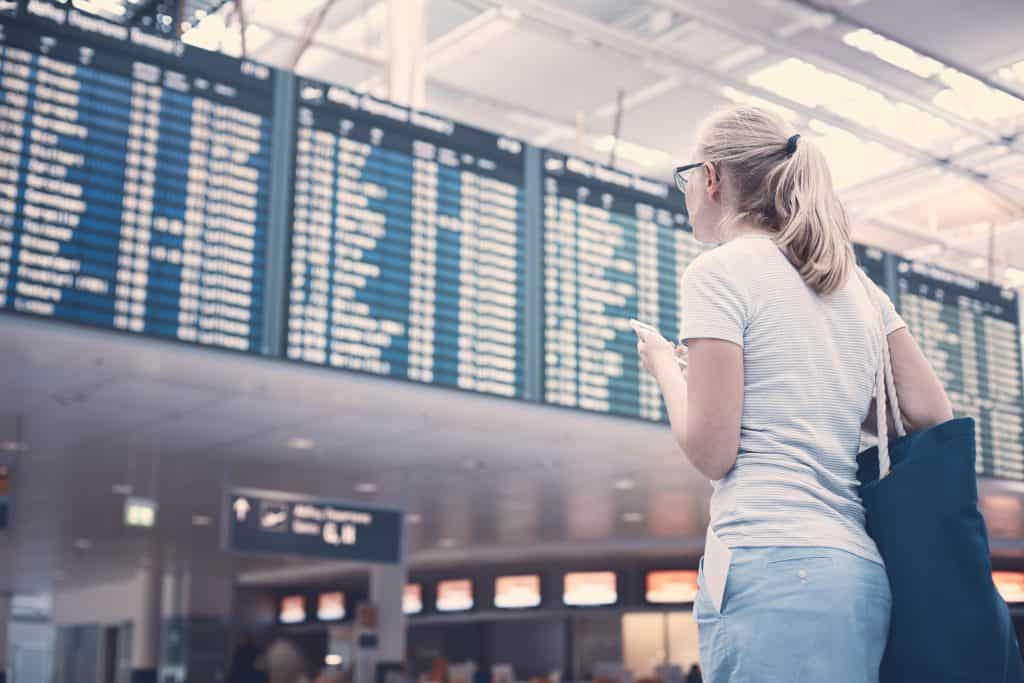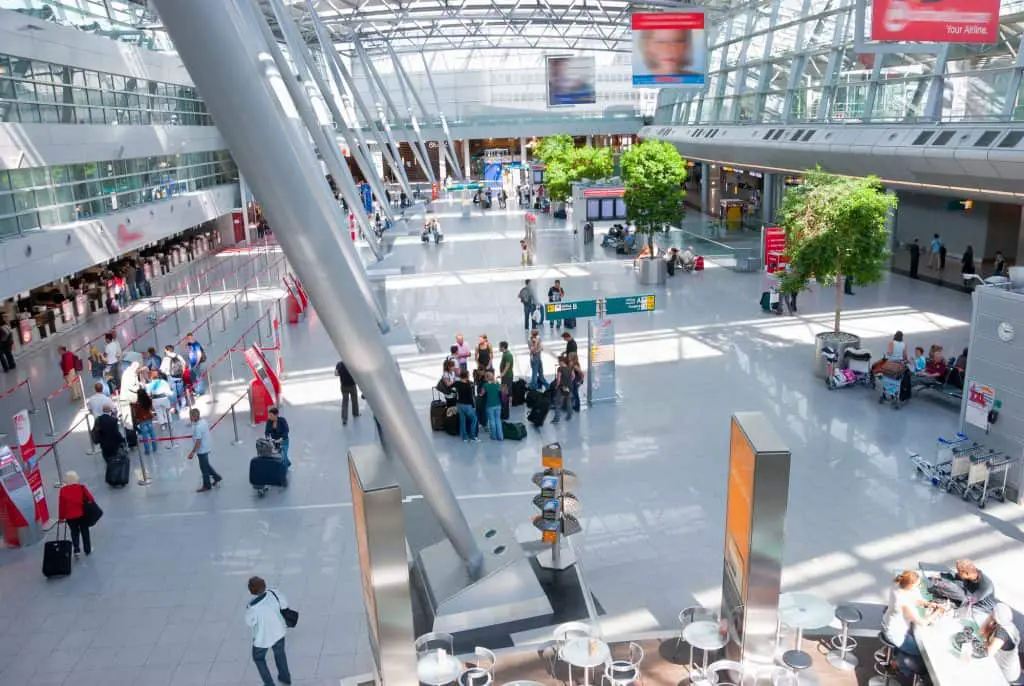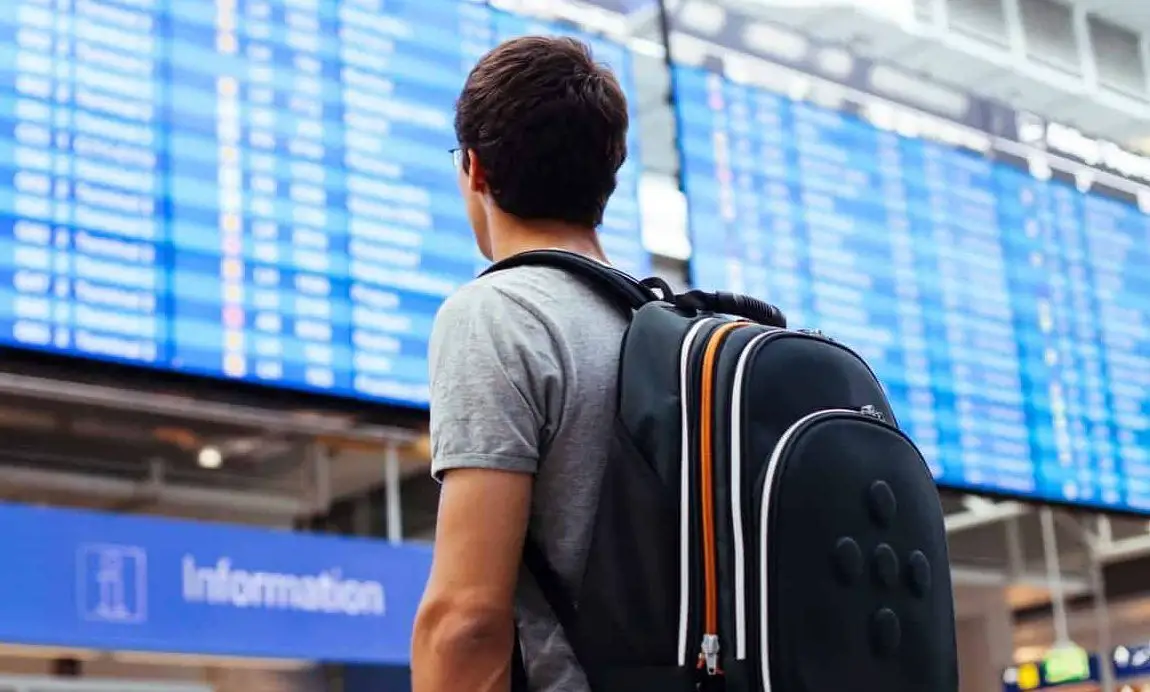Layovers, stopovers, and more – find out what they are, how they work, and more in this guide!
For longer flights, it’s almost impossible to avoid a layover.
If you’ve never had a layover, they can add another unknown into your trip. More unknowns can lead to anxiety – and nobody wants that!
Luckily, layovers are a really normal part of travel.
Find out the answers to all of your questions in this guide, including how do layovers work? Are they different with international flights or with luggage? Is a layover the same as a stopover?
How do layovers work?
A layover is when you make a stop on the way to your final destination that isn’t your final destination. In a layover, you get off the plane, figure out where your next flight takes off (which may be a new gate or even a new terminal!), and you wait until the next boarding time to get on your new plane.
With a layover, the whole flight plan is connected. If the layover was booked automatically, then you’ll get a boarding pass printed for each leg of the flight at your first check-in. This works even if you have a few different airlines in your flight plan! This is because of something called “Airline Alliances.” There are three main alliances – Star Alliance, SkyTeam, and One World. If your flight plan is all one alliance (and they are, by default, if booked together!), then each leg of your travel plan will be in communication with each other. It’s seamless!

If you book your own layover (i.e., fly with Spirit to one airport and then take United – so two airlines that aren’t in an alliance), you’ll have to retrieve your luggage and check-in at your layover airport.
In this article, we assume all layovers were booked as part of one flight plan.
A layover is called a “connection.” You can filter to 0, 1, 2, or more connections when flight searching on Google Flights.
How do layovers with luggage work?
Layovers with luggage are actually really easy – most of the time. More on that below.
If you’re flying domestically, your luggage will automatically be routed to your next plane. When you’re flying with a layover, you just need to retrieve your luggage at your final destination!
How do international layovers work?
International layovers work a little bit differently than domestic layovers.
Whenever you arrive in a new country, you need to go through Customs & Border Protection. This means you’ll have to wait in line to get your passport stamped, retrieve your luggage after getting stamped, and then go through the inspection portion of Customs. At Customs, they decide if they want to search your luggage or not – which means you need your luggage on you!
After you make it through Customs, you will typically go through a dedicated security line for international arrivals and then drop your bag again at a new luggage drop area.
Typically this process is very efficient, but it can still take an hour or more – and don’t forget, you may want to factor in time to freshen up or get food!
One important note: Europe has something called the “Schengen Zone”, which allows for border-free travel. If you travel within the Schengen Zone – which is mostly the EU, plus Switzerland and some others – you don’t need to go through Customs & Border Protection during a layover if you departed from a Schengen airport.
For example, if you depart from Milan and layover in Amsterdam, you won’t typically have to go through Customs again. This does change depending on the political situation in Europe, and sometimes security gets heightened. Just remember, the Schengen Zone means layovers are a teensy bit easier.
How do short layovers work?
Unfortunately, a short layover works the same way as a long layover – just with less time. This means that your first flight needs to depart and arrive on time and you need to move quickly in the airport once you land.
Airports have a thing called a “minimum connecting time”. Really efficient airports will have shorter MCTs (think Lufthansa ran airports, like Munich or Frankfurt). 90-minute layovers are generally a good number but it depends on a lot of factors.
Are you nervous about your layover time? Check the on-time performance of your first leg to see if it usually leaves on time. If your first flight usually leaves on time, you’re probably going to have a more successful layover.
Wondering how to find on-time performance? I use FlightAware. Be sure to look up all legs of your flight plan!

Other things to keep in mind when booking flights with layovers
Afternoon and evening flights are more prone to being delayed.
Flight delays end up stacking up on each other and compounding throughout the day. If an early flight is delayed, that probably means that each subsequent connection will become more and more delayed. A flight in the morning is less likely to be delayed than an afternoon or evening flight.
If your first flight is delayed, you’re a lot less likely to make your connection. Maximize your chances of making your connection by starting your journey in the morning!
Be proactive and call customer service as soon as you think you might miss a connection
If you miss your connection, the airline will attempt to automatically re-book you. However, there may not be many seats on the next flight out – meaning you could be trapped for hours, or even days. You should always be proactive and try and secure a seat on the next flight out where possible.
A real power move is to go stand in line at customer service while you’re on hold with customer service. This puts you in two lines at once and will get you helped sooner.
First come, first served when it comes to airport customer service. Be proactive and take action.
Pack your carry-on strategically in case your luggage gets lost
Any time you have a connection, there’s a chance for your luggage to get lost. Prepare for this by storing anything you need and anything valuable in your carry-on.
What might be valuable? Cameras, laptops, and jewelry make my list.
What might you need? Medicine. Phone charger. Extra baby supplies.
And what you NEED may change depending on how long your luggage is lost, if it gets lost. You may discover you need underwear, socks, an extra outfit, makeup, or a hairbrush. You should generally be prepared to live out of your carry-on for a day if you have a layover.
Be prepared for your luggage to get lost
Somehow you’ve become separated from your luggage or the airline has lost it outright. How can you become reunited with your bags?
Well, first things first: always keep your little bag tag receipt. I used to throw those out because they seemed wasteful. Don’t do that! If your luggage is lost, you need the info on that receipt to track your luggage.
Call baggage handling customer service to start a claim on your luggage. This will allow the airline to notify you when the baggage is found at it’s next airport and they can begin the process of routing it back to you.
Be prepared to describe your bag. Color, size, wheeled or not – any identifying features will only help you. You may be asked to describe what is in your bag, too. For bonus points, take a picture of the inside AND outside of your bag!
And, finally, be available to receive your luggage. United, at least, allows for delivery scheduling of your luggage. Be around and have your phone on ring. If your bag is lost internationally, you’ll need to find a way to receive calls. Check out my post on staying connected abroad if you need help with that.
What is an airport stopover? How do airport stopovers work?
An airport stopover is similar to a layover, but very different in practice!
With an airport stopver, you stay on the plane once you land at the second airport. It’s kind-of like a bus stop: you stop to drop off some passengers and pick up new passengers on the way to your final destination.
This means no time spent in the stopover airport, no time to get food or snacks, and no chance of lost luggage!

